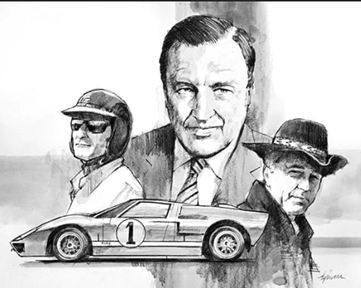So, what is a bissextile?
Now that I’ve got your attention … it’s a year with an extra day, usually at the end of February.
The evening of the 29th of Feb., I was checking our web site, www.mustangirs.com, and noticed the counter was at 98,999.
Hey, wouldn’t it be cool if we reached 99,000 visits before midnight on the 29th? With just a few minutes before the date rolled over to 1 March, someone, somewhere, logged on and we hit 99,000 visits.
We should celebrate! How about we give everyone a prize?
The first thing I did after deciding years ago to track down the elusive Mustang Independent Rear Suspension (IRS) was to contact Carroll Shelby. He suggested I try to find German-born Klaus Arning, who had designed the IRS, now retired and possibly living in the Detroit area.
I got lucky on the first try. Klaus turned out to be a great guy, and receptive to the idea. He went to the Henry Ford Museum (HFM) where he knew any surviving prints would be stored. “I show them my credentials. They give me the microfilms,” he said.
What a find! Drawn in FULL SCALE, by hand, in ink–no room for error– they are an absolute work of art. Full scale means that the entire assembly, third member, ½ shafts, coil overs, brakes, the whole banana, is brought into the drafting room and put on a huge table where a very large sheet of vellum (you can Google that) drafting paper is taped. From there a highly skilled draftsman measures each part with a ruler or a tape, maybe even a micrometer, and then draws it full scale in relation to the rest of the assembly. WOW.
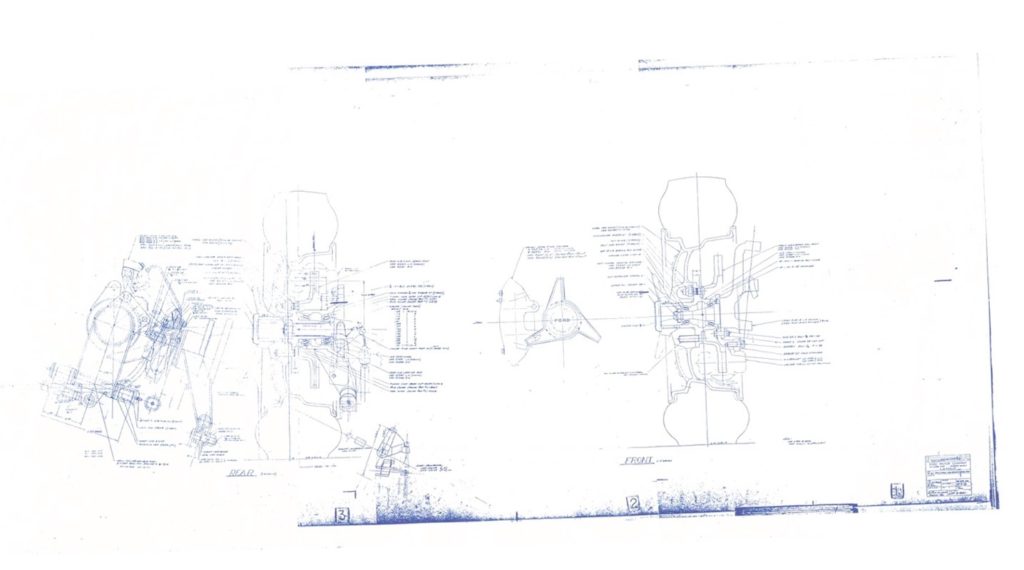
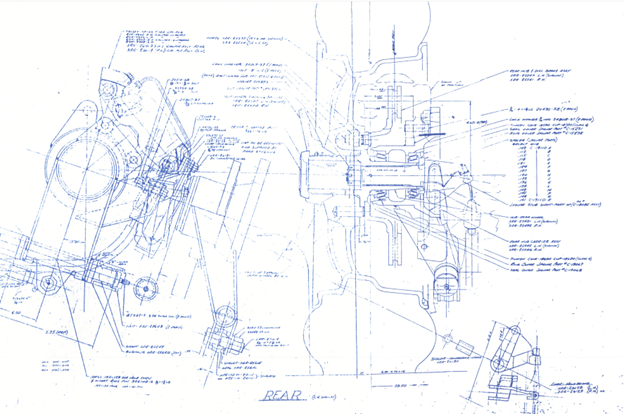
From Klaus’s microfilm, I was able to put the images back onto vellum and print them using one of the last ammonia powered blueprint machines in existence. They print in blue, hence the name.
From there, I started–along with a small cohort of fabricators and suppliers–to reconstruct Klaus’s magnum opus into what it is today. Our web site has instructions on how to contact my friend Jim Marietta, former Shelby employee and member of the Original Venice Crew (O.V.C.), who now offers the IRS for sale separately or installed in a 1965 K Code Mustang with a Shelby serial number. The complete car is then dialed in by some of the best vintage race drivers on the planet, usually at Willow Springs. Its new owner will shine at show, street, or track.
Helpful hint: bring money.
As we all know, the digital revolution is here, and to celebrate 99,000 views you can now have a print of Klaus’ master work FOR FREE by taking or sending these images to a good quality print shop. At Alpha Graphics, an 11 X 17 on photo-quality paper will cost you about two bucks. A good size for a wall hanging is 24 X 42, which, of course, will cost more. Happy bissextile day!

The first thing to do with any new print is check the TITLE BLOCK, usually in the lower right corner. There you’ll find the drawing title, T5-G.T. FALCON. Both Mustang and Cougar were being considered at the time as names for the new car. Since the Mustang as we know it was still being hammered together using the Falcon platform, T-5 GT Falcon made sense. When the Mustang was exported to Germany, Ford found the name Mustang was already taken. German Mustangs were named T-5 s. I like to think it was a tribute to Klaus. Hey, could be.
The drawing number, LRR-81952, is what you’ll need if the drawing is still available at the HFM. The companion drawing, LRR-21950,shows the modified front suspension which became known as the SHELBY DROP. It was adopted for the ’65 GT 350 and later Shelbys as it only required modifying existing suspension pieces. It turned the Falcon-based platform into a winning race car.
Next, the date, 12-3-1963, lets you know the April 14, 1964 intro date for the Mustang was looming large.
The owners of the initials in the DRAWN BY, CHECKED BY and APPROVED BY boxes have, unfortunately, been lost to the mists of time.
The IRS car was meant to have KNOCK OFF WHEELS. I’d love to see someone reproduce those. The “kidney bean” magnesium wheels (mags) were popular back in the day. The simple adapters shown convert the five threaded lugs into 5-pin drives. The spinners were designed by Ford Styling and used later as the basis for the Deluxe “spoke type” hub caps. “Huge” 6-70 / 15 TIRES were called out.
Four piston Kelsey Hayes DISC BRAKES are shown front and rear. Vintage racers still use them today and love ‘em.
After The WAR, American talent scouts roamed Germany looking for outstanding intellects, and discovered Klaus working for Borgward, the German auto manufacturer based in Klaus’s home town of Bremen. After a trip to America and a tour of Ford’s facilities, he was offered a position. Klaus soon rose to be head of advanced suspension design. He was also head of the team that built John F. Kennedy’s presidential limo.
The last time I saw Klaus we were sitting in the rotating bar at the top of the Stratosphere Tower in Las Vegas. Klaus was drinking schnaps and trying, without much success, to explain to me the finer points of roll induced camber change. It was 2 AM after a hard day at SEMA, and I’m afraid I was a poor student. For more about Klaus, go to https://www.mustangirs.com/pdf_articles/mustang_monthly_1983-09.pdf
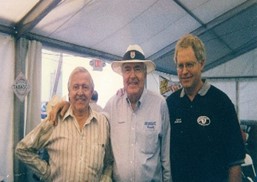
World Championship Chili Cook Offs, Las Vegas NV
Klaus and Shelby were good friends and I was able to spend time with both of them at several SEMA shows. Ah, the stories they could tell!
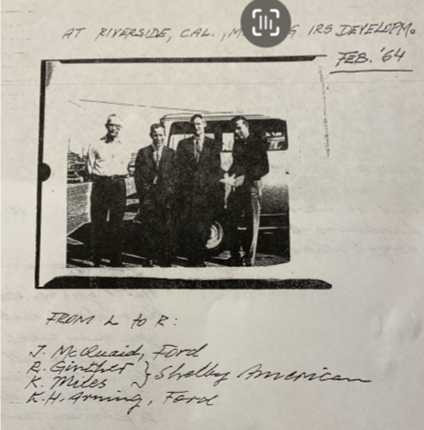
You may pick up something I’ve missed on these blueprints. It’s a great way to spend some time reliving the history of FoMoCo. If you’ve seen the movie Ford vs Ferrari, you’ve seen what Klaus and his contemporaries could do if given the chance. The GT-40 conquered the racing world, three years in a row!
“JUST DON’T SPILL YOUR DAMN COFFEE ON THE DAMN PRINTS!” as my old boss used to say.
All the best.
Duane

